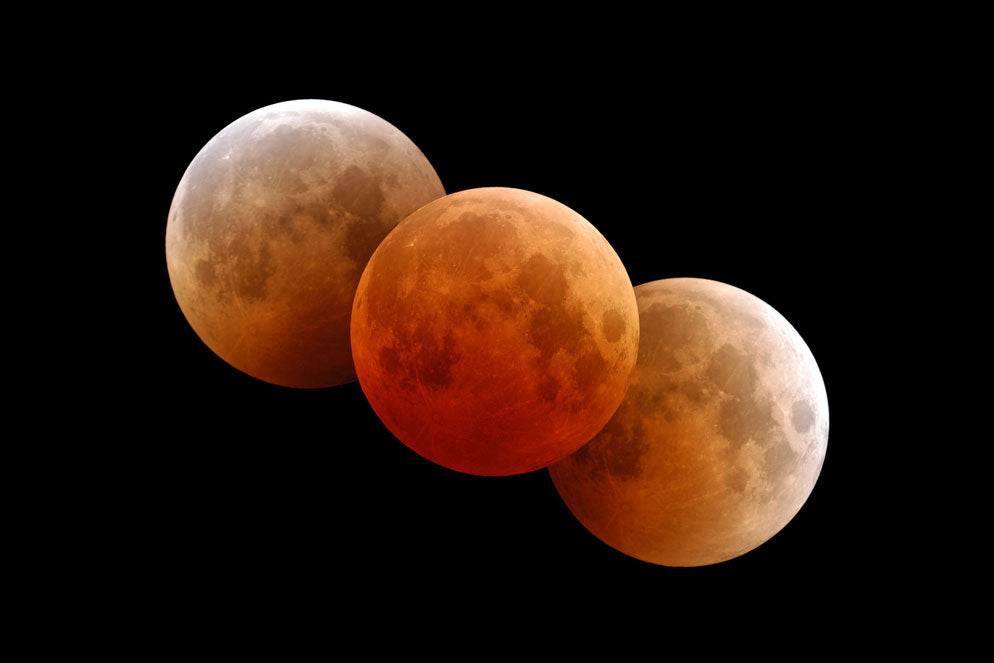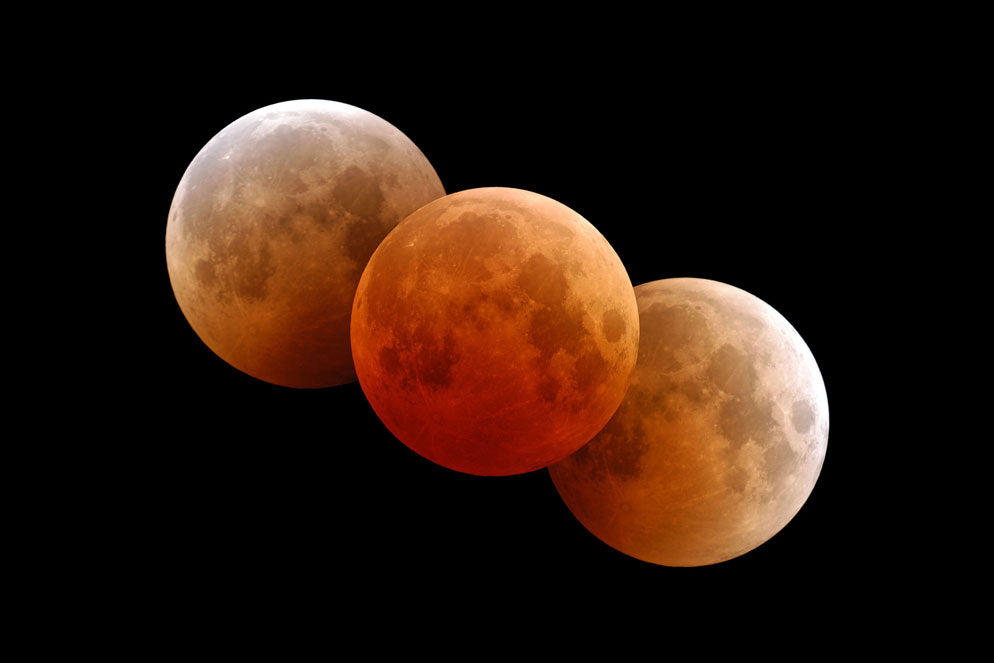On the evening of January 20th, a total lunar eclipse, dubbed the "Super Blood Wolf Moon" will be visible across North America.
Here's a quick astronomy lesson to explain its dramatic sounding name -
Supermoon: The moon seems larger than normal because its full moon phase happens to coincide with when it is closest to the Earth
Blood Moon: The moon turns a deep red color during the totality of the lunar eclipse, because the light of the sun is blocked by the earth, but just like when you cover your eyes from bright light, there's still some red light peaking through
Wolf Moon: The name given to a January full moon
This event will be like Christmas morning for many photographers, because at the point of total eclipse, the moon will appear a unique red color. Who wouldn't want to capture such an alien and unusual visual phenomenon?
 The Super Blood Wolf Moon will be visible across North and South America in totality, and partially visible in parts of Europe
The Super Blood Wolf Moon will be visible across North and South America in totality, and partially visible in parts of EuropeThe problem, however, is that shooting a lunar eclipse is about more than just pointing a zoom lens at it and hoping for the best.
Luckily our friends over at Nikon have a few helpful tips to get the most out of your lunar eclipse experience, which you can find on their blog HERE
The different modes that they cover in this blog are
Wide-Angle - Using a longer than normal exposure to capture the moon and also the surrounding landscape.
Star Trail - taking a long exposure image of the moon, capturing it as it moves across the sky, creating a streaking effect that makes the moon look like a ribbon of light
Multiple Exposure - Similar to the Star Trail in that you are capturing the moon as it moves across the sky, but with short exposures, rather than long ones, every 5-10 minutes, that can be stacked in post-processing for a unique effect.
Telephoto - Shooting with an extreme zoom lens to capture the texture and features of the moon close up.
All of these techniques require a tripod, as the camera needs to stay completely stationary for the length of the eclipse, whether for a long exposure, image stacking, or simply stability. It's recommended that you use a remote shutter or cable release as well.
Shop tripods HERE
Shop Remotes HERE

If you're shooting a telephoto image of the moon, and you're looking for a specific camera that will best accomplish the look you're going for, it's hard to go wrong with the Nikon CoolPix P1000. As featured in the video at the top of this post, it features not only an insane 125x magnification factor (equivalent to a 3000mm lens) but also a mode specifically for shooting lunar photography called Moon Mode, that automatically sets your exposure settings for the ideal result.
You can shop the CoolPix P1000 HERE
Once you've captured the Super Blood Wolf Moon, be sure to share your images with us on Facebook or Instagram, by tagging @pictureline and #pictureline.
Happy shooting!

